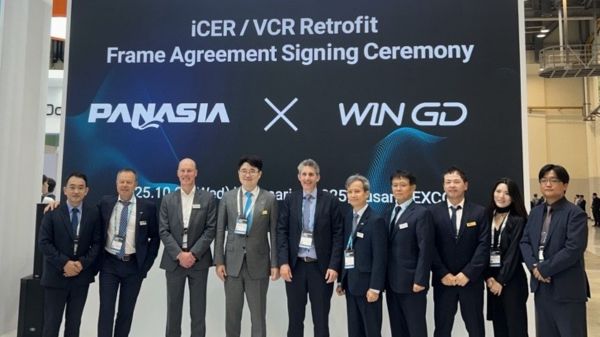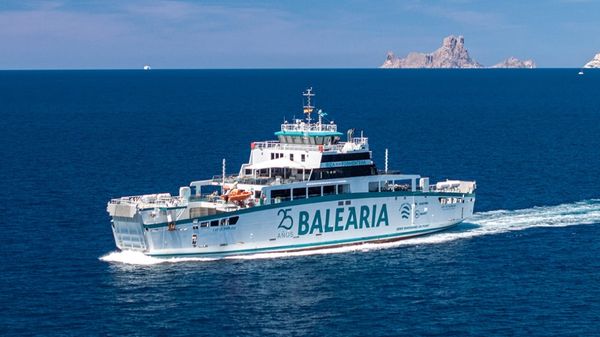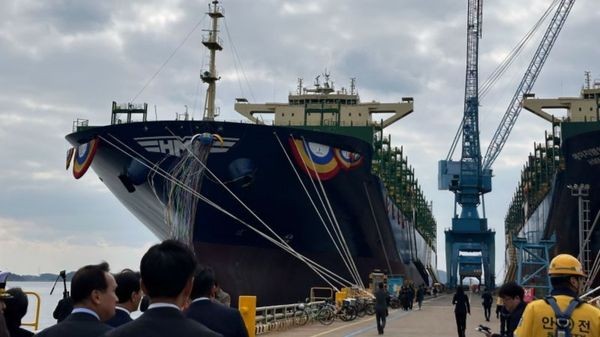Royal Caribbean Cruises Ltd., the world's second largest cruise operator, has announced that last year it reduced fuel consumption by 3.7 percent per available passenger cruise day (APCD) over 2008 levels, exceeding its 2 percent reduction goal by 85 percent, according to the company’s
2009 Stewardship Report.
In the report, Royal Caribbean said it used just under 30,000 less metric tonnes of fuel than planned. These savings were realized in part through the introduction of two new ships to the company's fleet:
Celebrity Equinox and
Oasis of the Seas, the largest cruise ship in the world.
Since 2007, Royal Caribbean has reduced fuel consumption per APCD by approximately 7 percent. It has been able to achieve these reductions in fuel consumption through technological advances in the design of its newest ships and by enhancing the way in which the company sails to each of its destinations.
Royal Caribbean said its goal for the coming year is to further increase efficiencies and save an additional 2.5 percent per APCD in 2010, which the company calls a “stretch goal” since it currently anticipates a 1.6 percent reduction based on the financial plan for 2010.
In looking at what drives fuel consumption onboard, Royal Caribbean found that in 2009, 60 percent of fuel was used for propulsion and maneuvering; 16 percent for hotel operations; 11 percent for heating, ventilation and air conditioning (HVAC); and 13 percent for the engine room and auxiliary equipment.
The company says it has been working on testing and deploying more efficient means of power production and consumption, as well as utilizing cleaner fuels. These measures include improved hydrodynamics, propeller, propulsion and hull designs, all of which require less fuel per base unit.
Royal Caribbean says its cross-company focus on active management of the drivers of energy, such as ship speed; hull maintenance; deployment (itinerary planning of individual sailings); heating, ventilation and air conditioning usage; lighting; water management; and behavioral changes among its guests and employees, has enabled it to reduce fuel use by 2-4 percent per APCD since last year.
Propulsion
As propulsion is the largest driver of fuel consumption, Royal Caribbean says in the report that it has been actively testing several programs that aid in optimizing the performance of each ship.
"Every ship has an optimal way in which it rides through the water. When a ship is tilted either left to right (listing) or back to front (a measure of trim) or any combination of the two, this increases the hull’s resistance in the water, which in turn decreases fuel efficiency. By pairing sensors and software, we will be able to optimize the trim and list of a ship based on current sea conditions, thus improving fuel efficiency," the company says in the report.
Royal Caribbean will also seek to minimize fuel consumption by better monitoring and modifying the ship's speed and course, taking into consideration the real time wind, current, temperature, and overall sea conditions.
Since 60 percent of Royal Caribbean's fuel use is spent on propulsion, the company says the most effective way to reduce the emissions from its fleet is to reduce the amount of fuel consumed by propulsion.
A few years ago, it began tracking and reporting data from every ship and every voyage in an effort to understand exactly how much fuel is being used by ship and itinerary. By inputting this historical data into its deployment tools, Royal Carbbean is then able to create more fuel-efficient itineraries moving forward.
Citing an example, Royal Caribbean says a ship sailing at nine knots will burn up to 2.9 metric tons of fuel per hour. If the speed is increased to 18 knots (a 100 percent increase), it might be expected that the ship would burn 100 percent more fuel. However, the ship will actually burn more than 6.4 metric tons of fuel per hour, which is a 120-percent increase. Sailing at 21 knots (a 133-percent increase) will increase fuel consumption to eight metric tons per hour; an increase in fuel of 176 percent.
The above example cited in the report shows that slower speed itineraries will not only reduce fuel costs, but will also have a direct impact on reducing related emissions.
Emissions
In 2009, Royal Caribbean's greenhouse gas (GHG) footprint was 4,108,556 metric tonnes, which equates to 0.14652 metric tonnes of carbon dioxide equivalents (CO2e) per APCD.
This figure, which includes both direct emissions from its ships and indirect emissions from electrical consumption at its shoreside facilities, represents the company's GHG footprint, including carbon dioxide (CO2), methane, and nitrous oxide emissions, as well as total refrigerant losses.
The vast majority (97 percent) of direct GHG emissions came from the burning of fuel in its engines – both for propulsion and to generate electricity for onboard usage.










